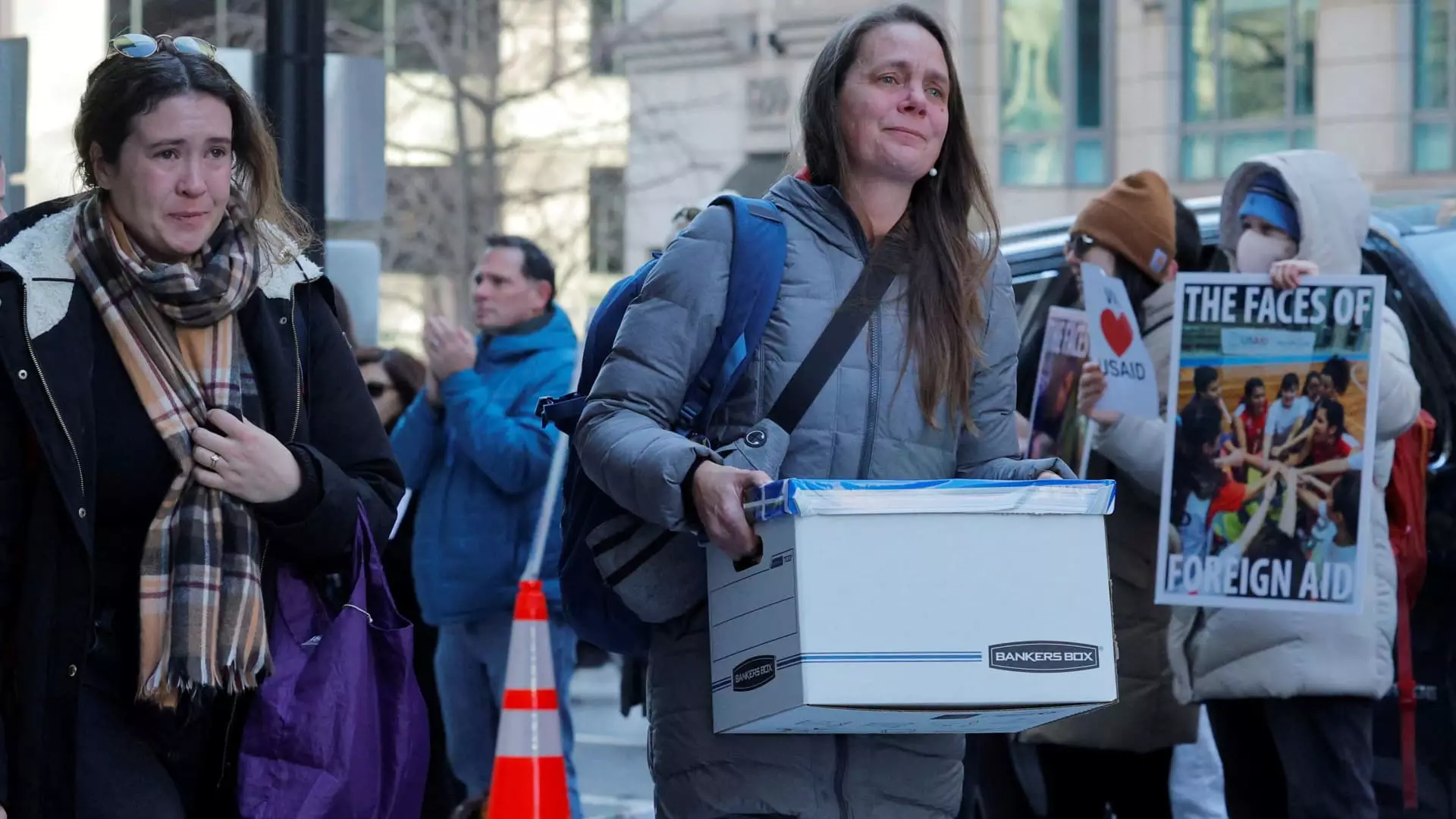The labor market is experiencing unprecedented turmoil, with the recent report from Challenger, Gray & Christmas revealing a staggering 172,017 layoffs announced in February alone. This figure represents an alarming 245% increase from January, marking the highest number of cuts seen since July 2020, during the fallout from the COVID-19 pandemic. The depth of these layoffs is particularly concerning, as we haven’t witnessed such a high total for February since 2009, a year often associated with the global financial crisis. These numbers paint a dire picture of an economy that is struggling, exacerbated by a political climate that seems determined to dismantle government support systems.
Federal Job Cuts: A Consequence of Political Ideology
Much of this job loss stems from the Trump administration’s aggressive drive to reduce the federal workforce, a move that aligns with their overarching philosophy of limited government. The cuts have impacted 17 federal agencies, totaling 62,242 layoffs. Elon Musk’s involvement in this reduction only adds to the complexity; the billionaire’s influence over job cuts is troubling. When entrepreneurs wield such power over employment markets, we must question how deeply intertwined corporate interests have become with government policies. Under the guise of efficiency and cost-cutting, we are witnessing a disregard for civic duty, leaving countless families in uncertainty.
Widespread Impacts Across Sectors
No sector appears immune to this wave of layoffs. Retail has been particularly hard hit, with major players like Macy’s and Forever 21 contributing to a surge of nearly six-fold increases in job cuts compared to the previous year. Even technology companies report a concerning trend, although the number of cuts in this domain has decreased slightly compared to last year. The stark irony is that while companies are slashing jobs, the hiring plans reported in February signal a mixed outlook. With 34,580 new positions announced, it seems that while some businesses are letting go of talent, others are trying to fill gaps, albeit amid deepening economic uncertainty.
A Flicker of Hope Amid Gloom
Despite the overwhelming doom and gloom, it’s worth noting that some data points reflect resilience. The growth of private sector hiring, although modest at just 77,000 for February, suggests that some areas of the economy are still capable of expansion. Yet, these glimmers of progress do little to overshadow the rising initial unemployment claims, particularly in Washington D.C., where the federal workforce is a significant portion of employment.
As we dissect these disturbing trends, it becomes clear that the intersection of political ideology and economic stability is fraught with challenges. A continued push towards downsizing government and prioritizing corporate interests has profound implications for millions of workers across the nation. It is time for a reevaluation of policies that prioritize growth without sacrificing the welfare of the workforce. Balance is essential, and it is incumbent upon leaders to ensure that the path forward does not leave behind the very individuals that form the backbone of our economy.

Leave a Reply